the green fairy
Have you ever had absinthe? It is a distilled, highly alcoholic (80-148 proof) spirit. It is often incorrectly referred to as a liqueur, but since it is not bottled with added sugar it is correctly classified as a spirit. Although absinthe has a very high level of alcohol by volume it is traditionally diluted with water before being enjoyed. This anise-flavored spirit is derived from herbs, including the flowers and leaves of the herb Artemisia absinthium, commonly referred to as “grande wormwood”, together with green anise and fennel. Although you may find colorless absinthe, it has a natural green color and is commonly referred to in historical literature as “la fée verte” – the “green fairy” in French. I am far from an authority on it, but I’ll share with you what I know… what I think I know, that is.
At the end of the eighteenth century, absinthe was invented by Pierre Ordinaire, a French doctor who distilled wormwood and other herbs in an alcoholic base as a remedy for his patients.
Commercial absinthe production began in 1797 when Major Dubied bought the recipe from Dr. Ordinaire and began to manufacture the spirit with his son-in-law, Henri-Louis Pernod, in Val-de-Travers, Switzerland. By the end of the nineteenth century, absinthe was embraced by the literary bohemian crowd who gathered in European cafés and declared La Fee Verte as their muse and inspiration.
In 1805, Pernod moved production to a larger facility across the border in Pontarlier, France. Although Pernod only distilled 16 liters of absinthe when he first started, only a couple of years later the production increased to over 400 liters per day.
By the 1870’s, there was an absolute absinthe craze in all of French society; just about everyone was drinking it. Days started with a glass of absinthe and ended with l’heure verte – the “green hour” – when at least one more glasses were drunk as an aperitif before supper.
Around the same time, its popularity spread to the United States, beginning in New Orleans. In 1869 Jacinto Aleix and his brother, Fernando, opened a bar named the “Old Absinthe House” at the corner of Bourbon and Bienville streets in the French district. The brothers hired Cayetano Ferrer, a bartender from the French Opera House, to run the bar.
In 1874, Ferrer took over the lease and renamed the bar the “Absinthe Room”. Ferrer was acclaimed for serving absinthe in the French style: marble fountains dripped cold water onto lumps of sugar suspended on perforated spoons over glasses of absinthe until the drink achieved the desired level of sweetness and dilution.
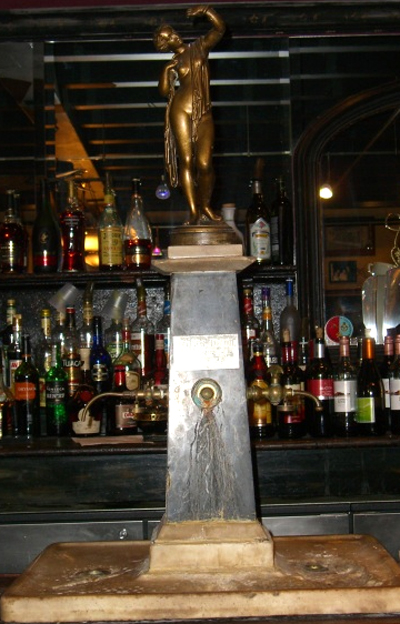 Ferrer’s establishment soon became the most famous bar in the city; its signature drink, the absinthe frappe, became the cocktail of the day.
Ferrer’s establishment soon became the most famous bar in the city; its signature drink, the absinthe frappe, became the cocktail of the day.
The Absinthe Room attracted quite a distinguished crowd; presidents William Howard Taft and Theodore Roosevelt, Mark Twain, Walt Whitman, William Thackeray, and Oscar Wilde.
“After the first glass, you see things as you wish they were. After the second, you see things as they are not. Finally you see things as they really are, which is the most horrible thing in the world.”
~Oscar Wilde
Spurred by the temperance movement and the winemakers’ associations, absinthe was publicly associated with violent crimes and social disorder.
“Absinthe makes you crazy and criminal, provokes epilepsy and tuberculosis, and has killed thousands of French people. It makes a ferocious beast of man, a martyr of woman, and a degenerate of the infant, it disorganizes and ruins the family and menaces the future of the country.”
And so the bans on absinthe began; In 1906 Belgium and Brazil banned the sale and distribution of absinthe. The Netherlands banned absinthe in 1909; followed by Switzerland in 1910; the United States in 1912, and France in 1914. Although the bans were lifted much earlier in other parts of the world, the U.S. ban prohibiting the use of genuine wormwood in the spirit was only lifted a few years ago. Following the re-legalization of genuine absinthe in the U.S. in 2007, the North American importer introduced a reformulated version that includes grande wormwood in an apparent effort to improve its consumer appeal. The new label proclaims, “Now With Wormwood!”. If you want to learn much more about the famed “green fairy”, go to this wonderfully informative and fun website.
Since I don’t own a genuine absinthe fountain or the spoons or the pretty little glasses, I didn’t make the traditional drink. Instead, I made a martini recipe.
Much of the romance surrounding absinthe lies in the preparation ritual of nineteenth-century Paris. Here is how you unleash your Green Fairy:
First, pour 2-1/2 to 3 ounces of absinthe into a glass. Place an absinthe spoon across the top of your glass. Position a sugar cube on it.
Next, Slowly drizzle (preferably from the spout of the gorgeous fountain) 2-1/2 to 3 ounces of ice-cold water over the sugar cube, to dissolve.
Lastly, stir with the absinthe spoon and enjoy!
So Damn Delicious Birthdaytini
2.5-ounces absinthe
.5-ounce Grand Marnier
1/2 teaspoon sugar
In a martini shaker filled with ice, mix together the three ingredients.
Shake vigorously until freezing cold, allowing the ice to dilute the alcohol, for at least 1 full minute.
Strain into a chilled martini glass.
Garnish with a lime slice.
Serves 1

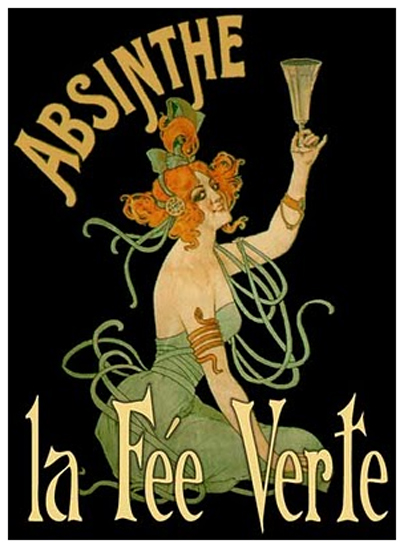
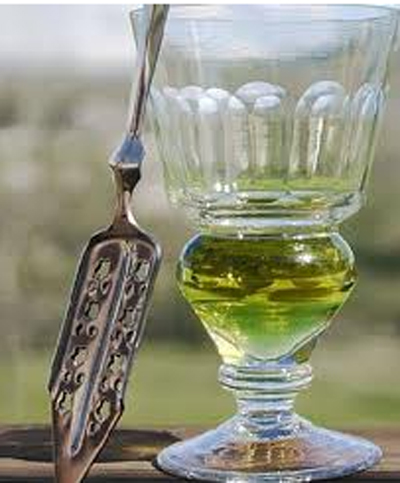

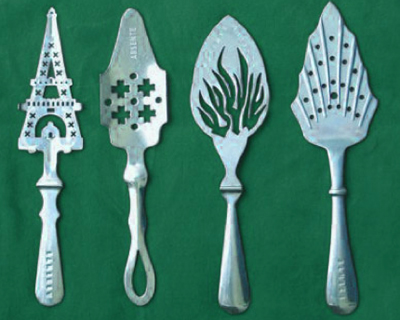

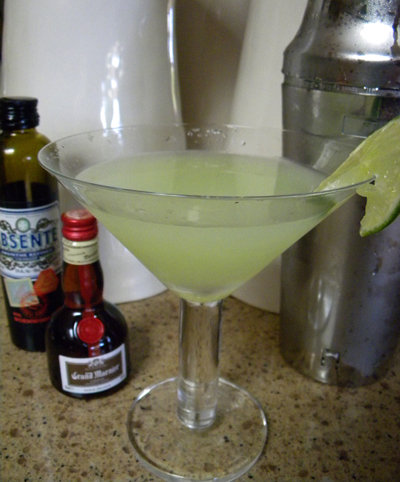




3 comments
I was worried you might break your streak, but now I see you were just working on a very informative post!
Thanks for noticing and remembering the “streak” Missy May. Only 2 more days to 100 in a row! Trust me, I didn’t really feel like posting today, but a cocktail is always doable! I’ve had that absinthe for months now, just waiting to post about it.
Oh… and don’t you think I should get myself a fountain set? Or maybe I should just ask for it for my birthday or Christmas…. hint hint.
Leave a Comment